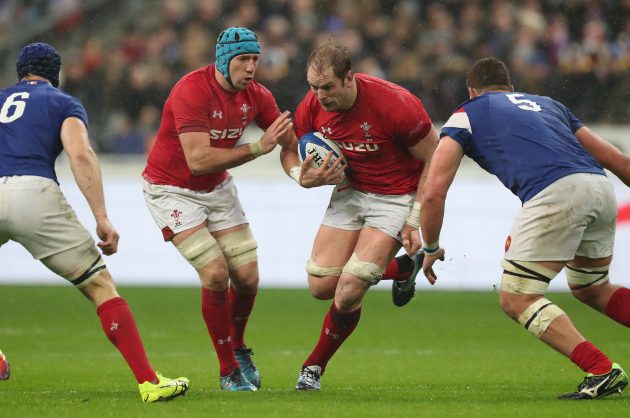From a bit of strapping to near mummification - there's plenty of tape used by rugby players at all levels
When rugby players stroll out onto the pitch or line-up to sing their National Anthems, it’s easy to spot some have strapping or tape wrapped around their legs.
So why do rugby players tape their legs?
The most noticeable form of strapping is on the thigh area for those who are lifted in the lineout.
Players who are propelled into the air by the lifters will have their legs strapped and sometimes have a ‘lifting block’ in too, which is essentially a piece of sponge.
It’s all to do with getting better grip on players as they are thrust into the air. While grabbing a man or woman’s thigh to perform the lifting act might be fine on some occasions, as players sweat or if the weather takes a turn for the worse, the tape allows for better grip and a cleaner contest in the air.
Lifting tape will be applied before games by sports therapists or physiotherapists, or at the grassroots level often by teammates – with club treasurers keeping a beady eye on how much of the expensive tape is being devoured each week.
There wasn’t always a need for lifting tape. The lineout in rugby has evolved through the years.

Rosie Galligan claims lineout ball for England
Up until 1999, when lifting was legalised, players used to compete for the ball by jumping unsupported. While there were specialists who would secure the ball by any means necessary, the lineout was often a lottery with clean ball being at a premium with scrum-halves scrambling to whip the ball away to their half-back partner.
There’s no limit to the number of players who can be taped up and be lifted in the lineout, normally it’s the taller, lighter, easier to lift players but at the professional end of the game – even the heaviest men and women are thrust into the air to compete for possession.
While not a cast iron rule, more often than not it is the second rows (locks) or back row (flankers, number eights) who are lifted in the lineout – but anyone can go up. On more than one occasion, Bath made use of their former 6ft 7in tall winger Matt Banahan in the lineout.
Tape and strapping is used for medical, non-lineout related reasons too, to support a player nursing a knock or when they are returning from an injury lay-off.
If you spot colourful tape being used, there’s a good chance its sports kinetic tape that was developed to enhance athletic performance and supports joints and muscles.
Download the digital edition of Rugby World straight to your tablet or subscribe to the print edition to get the magazine delivered to your door.
Follow Rugby World on Facebook, Instagram and Twitter.





